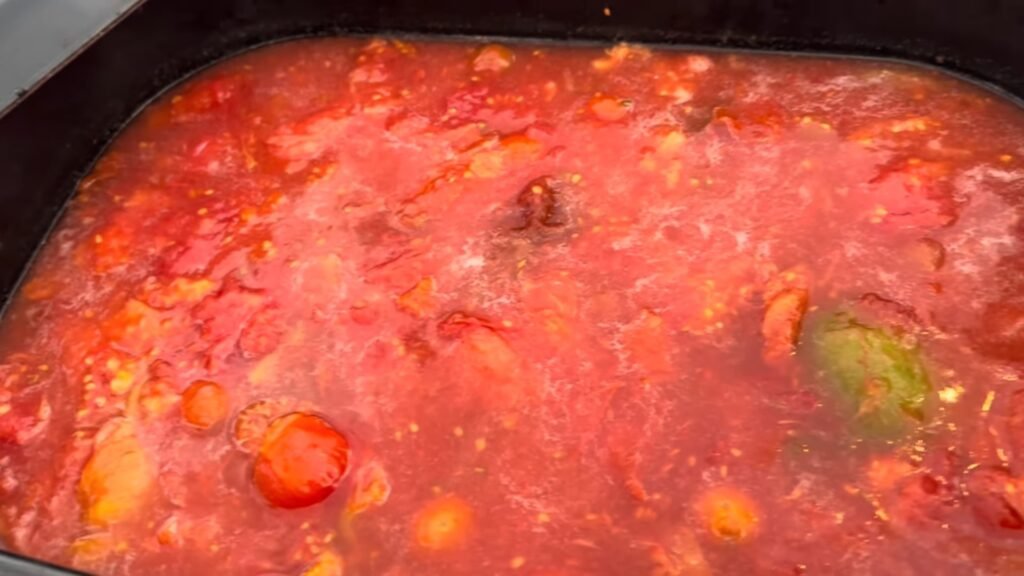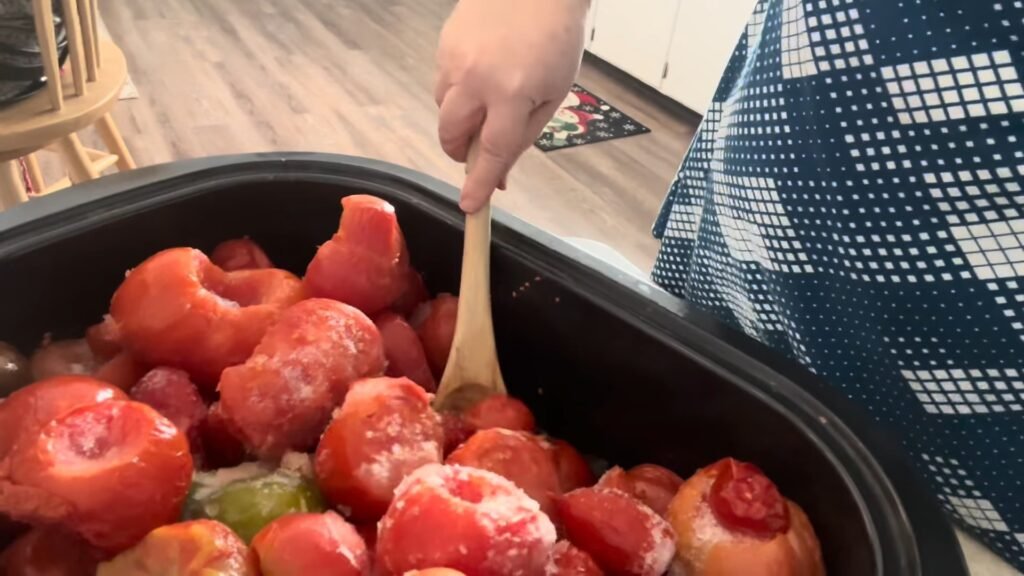

Welcome to Pike Creek Farm, where cozy winter days are the perfect excuse to get some canning done! Today, we’re diving into a project I look forward to every year – Canuary, hosted by Lisa Sutton over at Sutton’s Days. It’s a month-long celebration of canning, with a new recipe every single day of January, and let me tell you – it’s my favorite collaboration of the year.
This Canuary, I’m tackling a pantry must-have: homemade tomato sauce from frozen tomatoes. If your freezer is bursting at the seams (like mine was when my husband opened the door and bags of tomatoes came tumbling out), this one’s for you!
Why Freeze Tomatoes?
Last summer and fall, when the harvest was nonstop – beans, beets, apples, pears – there just wasn’t time to process full batches of tomatoes. So, I washed, cored, and popped them into freezer bags to deal with later. Well, later is now, and it’s time to turn those frozen beauties into rich, flavorful tomato sauce for my shelves.
Can You Can Tomatoes After Freezing?
Yes, but with a catch! Frozen tomatoes must be turned into a cooked product before canning. Freezing breaks down their cellular structure, so raw-packing or trying to preserve their shape (like for salsa or diced tomatoes) just doesn’t work. But cooked products? That’s where they shine! Think:
Tomato sauce
Tomato juice

Marinara
Crushed tomatoes
The Canning Process – Step by Step
Here’s how I turn those frozen tomatoes into shelf-stable jars of tomato sauce:
1. Thaw and Peel
I thaw my frozen tomatoes in a large pot. As they thaw, the skins slip off easily. I remove these and set them aside.

Tip: Never use tomatoes that froze on the vine after a frost. The plant pulls nutrients back into its roots, affecting the tomato's acidity – and we want our tomatoes safe for canning!
2. Cook Down and Strain
Once thawed, I simmer the tomatoes until they break down. I scoop out seeds and leftover skins with a mesh strainer. Some people use an immersion blender to smooth the sauce – it’s totally up to you!
3. Season and Add Acid
For safe water bath canning, you must acidify your sauce. I add:

1 tbsp bottled lemon juice per pint (or 2 tbsp per quart)
½ tsp salt per pint (optional, but adds flavor)

Citric acid can be used instead, but I’ve always preferred lemon juice for the flavor.

4. Fill Jars and Process
I ladle the hot sauce into clean, hot jars, leaving ½ inch headspace. Wipe the rims, apply heated lids (I use Four Jars lids), and finger-tighten rings.
For water bath canning:
Process pints for 35 minutes
Process quarts for 40 minutes
Ensure jars are fully submerged with 1–2 inches of water covering them.
Note: You can also pressure can tomato sauce if you prefer!
5. Let Them Cool and Check Seals
The next day, I check my seals – all jars sealed beautifully! Some separation is normal in canned tomato products; just give them a shake before use.
Final Thoughts from the Farm
There’s something deeply satisfying about turning last season’s harvest into homemade tomato sauce, especially on a snowy day when the world feels quiet. I love seeing my pantry fill up with jars that hold the flavors of summer – all thanks to a little winter effort.

0 servings